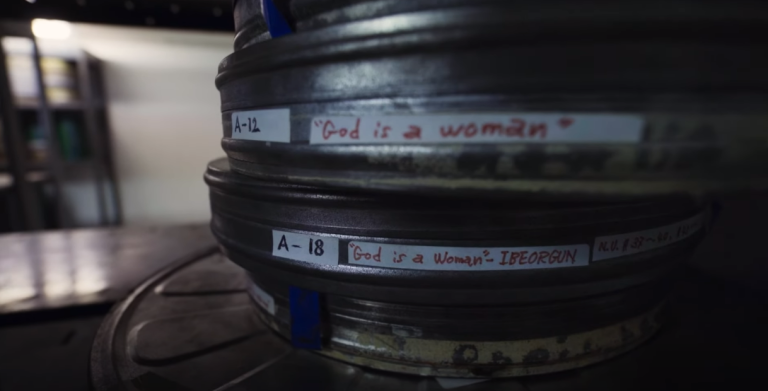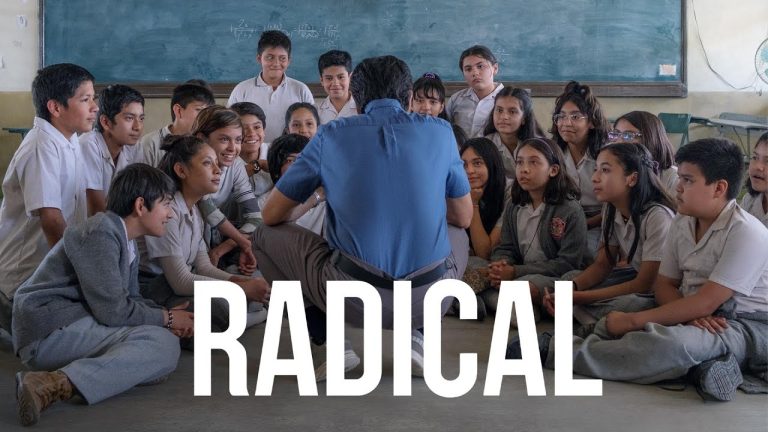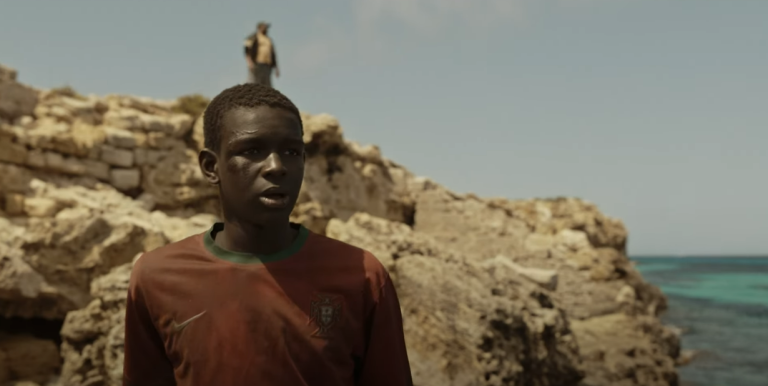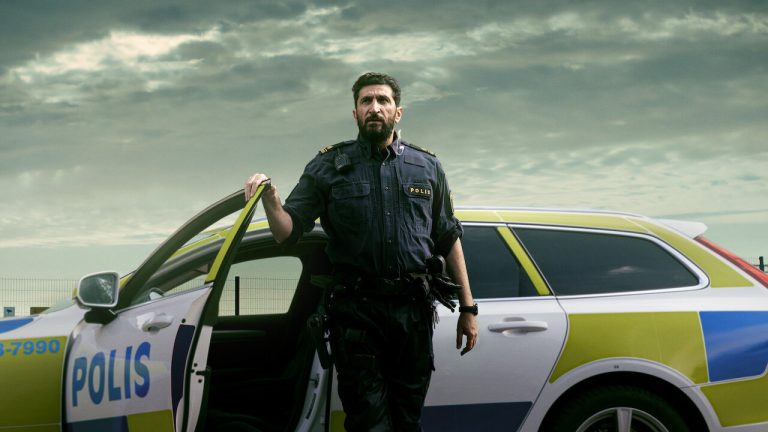
Overview
“Austerlitz” is a 2016 documentary film directed by Sergei Loznitsa. The film takes its name from the site of the Battle of Austerlitz, one of the most significant battles of the Napoleonic Wars, fought between the French army led by Napoleon Bonaparte and the Russian and Austrian forces. However, the film does not focus on the historical battle itself; instead, it presents a contemplative exploration of tourism and collective memory.
The documentary consists mainly of long, static shots capturing the visitors to the former concentration camp sites of Dachau and Sachsenhausen. The film observes the behavior of tourists as they interact with the sites, taking selfies, chatting, and occasionally showing signs of solemn reflection. There is no dialogue or narration in the film, allowing viewers to interpret the scenes and contemplate the significance of the sites and their visitors’ reactions.
“Austerlitz” prompts reflection on the nature of memory, history, and the ways in which we engage with sites of profound historical significance. It raises questions about the appropriateness of tourism at places of tragedy and invites viewers to consider the ethics and implications of memorialization.
The film received critical acclaim for its thought-provoking approach and its ability to evoke a sense of unease and introspection in its audience. It serves as a meditation on the complexities of remembrance and the ways in which the past continues to resonate in the present.
| Aspect | Details |
|---|---|
| Title | Austerlitz |
| Director | Sergei Loznitsa |
| Release Year | 2016 |
| Genre | Documentary |
| Main Theme | Tourism, Memory, History |
| Setting | Former concentration camp sites: Dachau and Sachsenhausen |
| Approach | Observational, Long static shots |
| Content | Captures tourists’ behavior at the sites, without dialogue or narration |
| Interpretation | Encourages reflection on memory, history, and the ethics of memorialization |
| Reception | Critical acclaim for its thought-provoking approach and evocative atmosphere |
| Significance | Raises questions about the nature of remembrance and the impact of historical sites |
| Awards | Nominated for various awards, won several for its direction and cinematography |
Plot of the Movie
“Austerlitz” does not follow a traditional plot structure with a narrative storyline. Instead, it presents an observational documentary approach, focusing on capturing the behavior of tourists visiting the former concentration camp sites of Dachau and Sachsenhausen.
The film primarily consists of long, static shots of tourists as they interact with the sites. Viewers observe tourists taking selfies, chatting, and occasionally displaying moments of reflection or solemnity. There is no dialogue or narration in the film, allowing the scenes to speak for themselves.

Through its minimalist approach, “Austerlitz” prompts viewers to contemplate the significance of these historical sites and the ethical implications of tourism at places of tragedy. The absence of a traditional plot allows viewers to interpret the film’s imagery and reflect on broader themes such as memory, history, and the ways in which we engage with the past.
Overall, the “plot” of “Austerlitz” can be understood as an exploration of collective memory and the complexities of remembrance, rather than a traditional narrative arc.
Reasons to Watch It
“Austerlitz” offers a thought-provoking and evocative exploration of tourism and collective memory at historical sites, making it a compelling watch for those interested in contemplating the ethical implications of visiting places of tragedy and the complexities of remembrance.
Thought-provoking exploration – The film offers a unique and contemplative exploration of tourism and collective memory at historical sites, prompting viewers to reflect on the nature of remembrance and the ethical implications of visiting places of tragedy. Minimalist approach – “Austerlitz” employs a minimalist filmmaking style, consisting primarily of long, static shots without dialogue or narration. This approach allows viewers to immerse themselves in the atmosphere of the sites and interpret the scenes in their own way.

Evocative atmosphere – Through its observational approach, the film creates an evocative atmosphere that captures the solemnity and complexity of the historical sites. Viewers may find themselves deeply moved by the imagery and themes presented in the film. Ethical considerations – “Austerlitz” raises important questions about the appropriateness of tourism at sites of historical tragedy and the ways in which we engage with the past. Watching the film can stimulate meaningful discussions about memory, history, and the responsibilities of visitors to these sites.
Critical acclaim – “Austerlitz” has received critical acclaim for its thought-provoking approach and its ability to evoke a sense of introspection in viewers. It has been praised for its cinematic craftsmanship and its ability to engage audiences on a profound level.
Overall, “Austerlitz” offers a compelling and meditative viewing experience that is likely to resonate with viewers interested in history, memory, and the complexities of human experience.
Reasons to Avoid It
Potential viewers may opt to avoid ‘Austerlitz’ due to its lack of traditional narrative, solemn subject matter focusing on tourism at former concentration camp sites, slow-paced observational style, and ethical considerations surrounding the appropriateness of such visits.

Lack of traditional narrative – The film eschews traditional storytelling elements such as dialogue and narration, opting instead for a minimalist approach consisting of long, static shots. This may deter viewers seeking a more structured or plot-driven experience. Solemn subject matter – “Austerlitz” focuses on tourists visiting former concentration camp sites, which can be emotionally heavy and unsettling for some viewers. Those sensitive to depictions of historical tragedies may find the film distressing or difficult to watch.
Slow-paced and contemplative – The film’s observational style and lack of action may not appeal to audiences seeking fast-paced entertainment or straightforward storytelling. Some viewers may find the film slow-moving or tedious. Lack of clear resolution – As “Austerlitz” does not follow a traditional plot structure, it may leave some viewers feeling unsatisfied or unsure of its ultimate message or conclusion.
Ethical considerations – The film raises questions about the appropriateness of tourism at sites of historical tragedy, which may cause discomfort or unease for viewers who have visited similar sites or grapple with the ethics of such visits.
Overall, while “Austerlitz” may offer a meaningful and introspective viewing experience for some, others may prefer to avoid it due to its solemn subject matter, lack of traditional narrative, and contemplative pacing.
Critical Response
“Austerlitz” garnered positive critical response, with reviewers praising its thought-provoking exploration of tourism at historical sites and its evocative depiction of collective memory.
Variety described the film as “a work of intense clarity and force, a chilling reminder of the way in which the true and awful dimensions of the past can recede into comfortable banality with the passage of time.” The Hollywood Reporter praised director Sergei Loznitsa’s ability to capture “the absurdity of the selfie-taking tourists and their obliviousness to the site’s history.”

Screen International lauded the film’s “unique, hypnotic experience” and noted that it “never ceases to be haunting and provocative.” The Guardian hailed “Austerlitz” as “a profound meditation on remembrance and the way we choose to acknowledge history.”
Overall, critics appreciated the film’s minimalist style, its ability to prompt introspection, and its exploration of the complexities of memory and historical commemoration.
Key Themes
The key themes explored in “Austerlitz” include the intersection of tourism and tragedy, collective memory, ethical considerations surrounding visiting historical sites, the tension between absence and presence, and the importance of reflection and remembrance.

Tourism and Tragedy: The film delves into the complex intersection of tourism and historical tragedy, raising questions about the appropriateness of visiting sites of profound suffering and the ways in which tourists engage with such places. Collective Memory: “Austerlitz” prompts reflection on the nature of collective memory and the ways in which societies remember and commemorate historical events, particularly those of great significance and tragedy.
Ethical Considerations: The film raises ethical questions about the ethics of tourism at sites of historical significance, inviting viewers to consider their own roles and responsibilities as visitors to these places. Absence and Presence: Through its minimalist approach, “Austerlitz” explores the tension between absence and presence, as the sites of historical tragedy are inhabited by tourists whose actions sometimes seem to trivialize or obscure the events that occurred there.
Reflection and Remembrance: Viewers are encouraged to reflect on the significance of the past and the ways in which it continues to shape the present, prompting contemplation on the importance of remembering and acknowledging historical events.
Overall, “Austerlitz” engages with profound themes related to memory, history, and the ethics of memorialization, inviting viewers to consider their own relationship to the past and its legacy.
Memorable Moments
While “Austerlitz” primarily consists of long, static shots without traditional narrative arcs, some memorable moments include:

Tourists taking selfies: The film captures tourists engaging in seemingly incongruous behavior, such as taking selfies against the backdrop of former concentration camp sites, highlighting the disconnect between the solemnity of the location and the tourists’ actions. Moments of reflection: Amidst the bustling activity of the tourists, there are occasional glimpses of individuals pausing to reflect silently or pay their respects, providing poignant reminders of the sites’ historical significance.
Group dynamics: “Austerlitz” observes the behavior of tourists in groups, showcasing the varied reactions and interactions among visitors as they navigate the sites together, offering insight into the collective experience of memorial tourism. The passage of time: Through its long, unbroken shots, the film conveys a sense of the passage of time and the enduring significance of the historical events commemorated at the sites, prompting viewers to consider the lasting impact of the past on the present.
The contrast of mundane and profound: “Austerlitz” juxtaposes the mundane activities of tourists, such as chatting and browsing their phones, with the profound historical significance of the sites they are visiting, highlighting the tension between everyday life and the weight of history.
These memorable moments contribute to the film’s contemplative and thought-provoking exploration of memory, history, and the complexities of engaging with sites of historical tragedy.
Streaming Platforms
“Austerlitz” may be available for streaming on platforms such as Amazon Prime Video, iTunes, Google Play Movies & TV, YouTube Movies, Vimeo On Demand, Kanopy, MUBI, Sundance Now, and Fandor, although availability may vary by region and over time.

| Platform | Availability | Subscription Required | Rental/Purchase Options | Free Trial Available |
|---|---|---|---|---|
| Amazon Prime Video | Available | Yes | Rental/Purchase | Yes |
| iTunes | Available | No | Rental/Purchase | N/A |
| Google Play Movies & TV | Available | No | Rental/Purchase | N/A |
| YouTube Movies | Available | No | Rental/Purchase | N/A |
| Vimeo On Demand | Available | No | Rental/Purchase | N/A |
| Kanopy | Available | Yes (Library Card) | Free with Library Card | Yes |
| MUBI | Available | Yes | Subscription | Yes |
| Sundance Now | Available | Yes | Subscription | Yes |
| Fandor | Available | Yes | Subscription | Yes |
Please be aware that the availability of “Austerlitz” may vary, so it’s advisable to verify its availability on each platform separately or use a streaming search tool to find the most current information on where you can watch it in your area.






